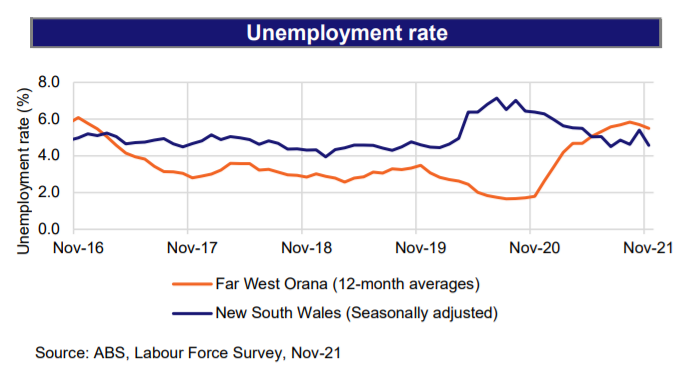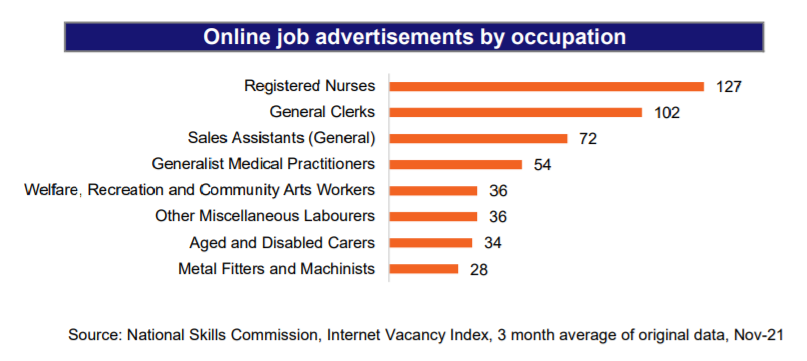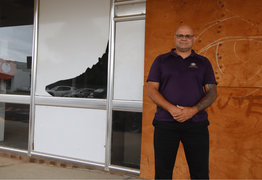Long term reform needed to fix regional labour market
Lee O'Connor
06 February 2022, 7:19 AM
 Both unemployment rates and job vacancies are rising in the regions - preventing businesses and communities from 'bouncing back'
Both unemployment rates and job vacancies are rising in the regions - preventing businesses and communities from 'bouncing back'Regional businesses continue to struggle to find staff even as recently released labour force data shows the unemployment rate beginning to creep higher.
The unemployment rate for the Orana Far West region, which includes western plains communities, was back in familiar territory at the end of December 2021, reaching 4.8%, slightly higher than the national 4.2% and up from 2.6% in December 2020.

However, in regional areas, unemployment is not from lack of available jobs with online job advertisements 133.8% higher in December 2021 that they were in March 2020.

Local government areas with the highest reported unemployment rates in September 2021 were Walgett (12.7%) up from 3.6% in 12months, Coonamble 7.7% up from 2.1%, Broken Hill 7.1% up from 2.0%, Warrumbungle shire 5.6% up from 2.2% and Gilgandra at 5.6% from a low 1.7%.
The agricultural industry has been hit hard, with farmers, transport operators and contractors reporting an avoidable loss of income in recent months as a result of having too few workers.
In September last year the NSW Farmers Association released a 10 Point Plan to tackle the agricultural skills shortage and in January reiterated the need for more workers as their top priority for 2022.
NSW Farmers President James Jackson said the higher infection rate of the Omicron strain had brought the fragility of the agricultural workforce into sharp focus – and the same could be said for a number of industries that are critical to rural communities.
The National Skills Commission has identified current skills shortages in around 20% of all assessed occupations around Australia.
Shortages are most common in the Technicians and Trades Workers occupation group, with 42% of occupations assessed in shortage.
These include Electrician (General), Carpenter, Chef and Fitter (General) and the NSC's previous research has shown that shortage of these workers are often persistent over time.
Close to a fifth (19%) of assessed Professionals occupations are also in shortage, followed by Machinery Operators and Drivers (17%), Managers (12%) and Community and Personal Service Workers (8%).
Other large employing occupations in shortage include Hairdresser, Child Care Worker and Motor Mechanic (General).
While some targeted government initiatives have been announced lately – including changes to visa requirements, reduction in red tape preventing tradespeople working across state borders, allocation of 5000 fee-free training places in RSA (Responsible Services of Alcohol), creating truck driving apprenticeships and offering $800 retention payments to aged care staff - there is still a sense that governments are over-reliant on overall economic activity to somehow sort workforce shortages.
Finance Minister Simon Birmingham told ABC News Breakfast on Friday 28 January that "the real dividends flow from having the strongest possible economy and the strongest possible job outcomes" and indicated that the current shortage would be resolved as we move past the initial COVID outbreaks.
"Although we know things are tough in terms of labour market and worker shortages right now due to Omicron, we're confident the resilience we've seen before and the bounce back we've seen before will be repeated again as we come off of this peak of current cases," Mr Birmingham said.
In the meantime, regional businesses hamstrung by lack of staff say that more needs to be done to address the worker shortage and the NSW Farmers' call for reform could equally be applied to many other industries.

NSW Farmers Association President James Jackson
"We need more workers," Mr Jackson said.
“We can’t keep waiting for governments to act – the disruptions of COVID are not going away any time soon, and we need real action on shoring up our agricultural workforce."
“It’s all well and good to talk about training workers, but what about the next harvest and the one after that?
“There are gaps appearing all over the labour market because of Omicron and a lack of RATs to meet public health mandates, and the farmers that grow our food are competing with restaurants and tourism for foreign workers.
“We need to look at all options to encourage work participation, because there are likely people out there who would help if they were allowed to or were not financially disadvantaged by doing so," he said.
“Long-term reform of the labour market is needed, but we cannot wait years while our crops rot because there aren’t enough workers in the fields now.”



